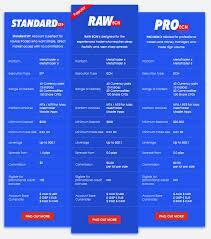- Empty cart.
- Continue Shopping
Understanding Stock Splits and What Happens Next

This reduction in par value is made to lower the market price of the stock to make the stock more attractive to potential investors. When a company’s stock splits, the change in the par value is offset by a corresponding change in the number of shares so the total par value remains the same. The total stockholders’ equity is unaffected by the stock split and no entries are recorded. For example, if Grandma’s Girls declared a 3‐for‐1 stock split instead of a 10% stock dividend, the company would issue three shares in place of every one share currently held. After the split occurs, the par value or stated value is divided by 3 (because it is a 3‐for‐1 stock split) to determine the new par or stated value, and the number of outstanding shares is multiplied by 3.
As with a forward stock split, the market value of the company after a reverse stock split remains the same. Most investors are more comfortable purchasing, say, 100 shares of a $10 stock as opposed to 1 share of a $1,000 stock. So when the share price has risen substantially, many public companies end up declaring a stock split to reduce it.
Create a free account to unlock this Template
A reverse/forward stock split consists of a reverse stock split followed by a forward stock split. The reverse split reduces the overall number of shares a shareholder owns, causing some shareholders who hold less than the minimum required by the split to be cashed out. The forward stock split then increases the number of shares owned by the remaining shareholders. A stock split is a corporate action in which a company issues additional shares to shareholders, increasing the total by the specified ratio based on the shares they held previously. Companies often choose to split their stock to lower its trading price to a more comfortable range for most investors and to increase the liquidity of trading in its shares. Since every stockholder will receive additional shares, and since the corporation is no better off after the stock dividend, the value of each share should decrease.
Although shareholders will perceive very little difference between a stock dividend and stock split, the accounting for stock dividends is unique. Stock dividends are recorded by moving amounts from retained earnings to paid-in capital. A small stock dividend (generally less than 20-25% of the existing shares outstanding) is accounted https://online-accounting.net/ for at market price on the date of declaration. A large stock dividend (generally over the 20-25% range) is accounted for at par value. In contrast to cash dividends discussed earlier in this chapter, stock dividends involve the issuance of additional shares of stock to existing shareholders on a proportional basis.
What is the journal entry of the opening stock?
There are entire publications devoted to tracking stocks that split and attempting to profit from the bullish nature of the splits. Critics would say this strategy is by no means a time-tested one and is questionably successful at best. A company that takes this corporate action might do so if its share price had decreased to a level at which it runs the risk of being delisted from an exchange for not meeting the minimum price required for a listing. Certain mutual funds may not invest in stocks priced below a preset minimum per share. A company might also opt for a reverse split to make its stock more appealing to investors who may perceive higher-priced shares as more valuable.
- A large stock dividend (generally over the 20-25% range) is accounted for at par value.
- On the other hand, stock dividends distribute additional shares of stock, and because stock is part of equity and not an asset, stock dividends do not become liabilities when declared.
- Although shareholders will perceive very little difference between a stock dividend and stock split, the accounting for stock dividends is unique.
- It also may affect the par value and market price per share, reducing them proportionately.
- No change to the company’s assets occurred; however, the potential subsequent increase in market value of the company’s stock will increase the investor’s perception of the value of the company.
The impact on the financial statement usually does not drive the decision to choose between one of the stock dividend types or a stock split. Large stock dividends and stock splits are done in an attempt to lower the market price of the stock so that it is more affordable to potential investors. A small stock dividend is viewed by investors as a distribution of the company’s earnings.
How do you get the stock dividends in a journal entry?
It also may affect the par value and market price per share, reducing them proportionately. However, the total dollar value of the shares outstanding does not change. Companies that do not want to issue cash or property dividends but still want to provide some benefit to shareholders may choose between small stock dividends, large stock dividends, and stock splits. Both small and large stock dividends occur when a company distributes additional shares of stock to existing stockholders. After a split, the stock price will be reduced (because the number of shares outstanding has increased).
A journal entry with debits and credits are not needed since the line items on shareholders equity do not change in a reverse stock split. For recording purpose, a reverse stock split does not require a double what is a good liquidity ratio entry accounting because it does not affect the ultimate reporting amount of any item in stockholders’ equity. Like a forward split, no double entry accounting is needed to book a reverse stock split.
Journal Entries for a Reverse Stock Split
As such, although the number of outstanding shares and the price change, the total market value remains constant. If you buy a candy bar for $1 and cut it in half, each half is now worth $0.50. The total value of the candy does not increase just because there are more pieces. The final example above shows a reverse stock split where the number of shares outstanding is reduced rather than increased. A reverse split is used when a business wants to increase the market price of its stock.
The Numbers Don’t Lie: The Economic Impact of Women in Rodeo – The Team Roping Journal
The Numbers Don’t Lie: The Economic Impact of Women in Rodeo.
Posted: Wed, 06 Sep 2023 15:10:55 GMT [source]
A company may do this if they are afraid their shares are going to be delisted or as a way of gaining more respectability in the market. Many stock exchanges will delist stocks if they fall below a certain price per share. Since a stock split does not change the balance in the Common Stock account, a complete journal entry was not required.
While a few companies may use a temporary account, Dividends Declared, rather than Retained Earnings, most companies debit Retained Earnings directly. Ultimately, any dividends declared cause a decrease to Retained Earnings. To convert a quantity of pre-split shares to post-split shares across multiple splits, multiple the ratio value of each split together.
To illustrate, assume that Duratech Corporation has 60,000 shares of $0.50 par value common stock outstanding at the end of its second year of operations. Duratech’s board of directors declares a 5% stock dividend on the last day of the year, and the market value of each share of stock on the same day was $9. Figure 14.9 shows the stockholders’ equity section of Duratech’s balance sheet just prior to the stock declaration.

There is no change in total assets, total liabilities, or total stockholders’ equity when a small stock dividend, a large stock dividend, or a stock split occurs. Both types of stock dividends impact the accounts in stockholders’ equity. A stock split causes no change in any of the accounts within stockholders’ equity.
AccountingTools
For example, If the current market price of David Inc’s stock is $120 per share, hopefully it will come down to $60 per share immediately after 2-for-1 stock split. Similar to distribution of a small dividend, the amounts within the accounts are shifted from the earned capital account (Retained Earnings) to the contributed capital account (Common Stock) though in different amounts. The number of shares outstanding has increased from the 60,000 shares prior to the distribution, to the 78,000 outstanding shares after the distribution. The difference is the 18,000 additional shares in the stock dividend distribution.
